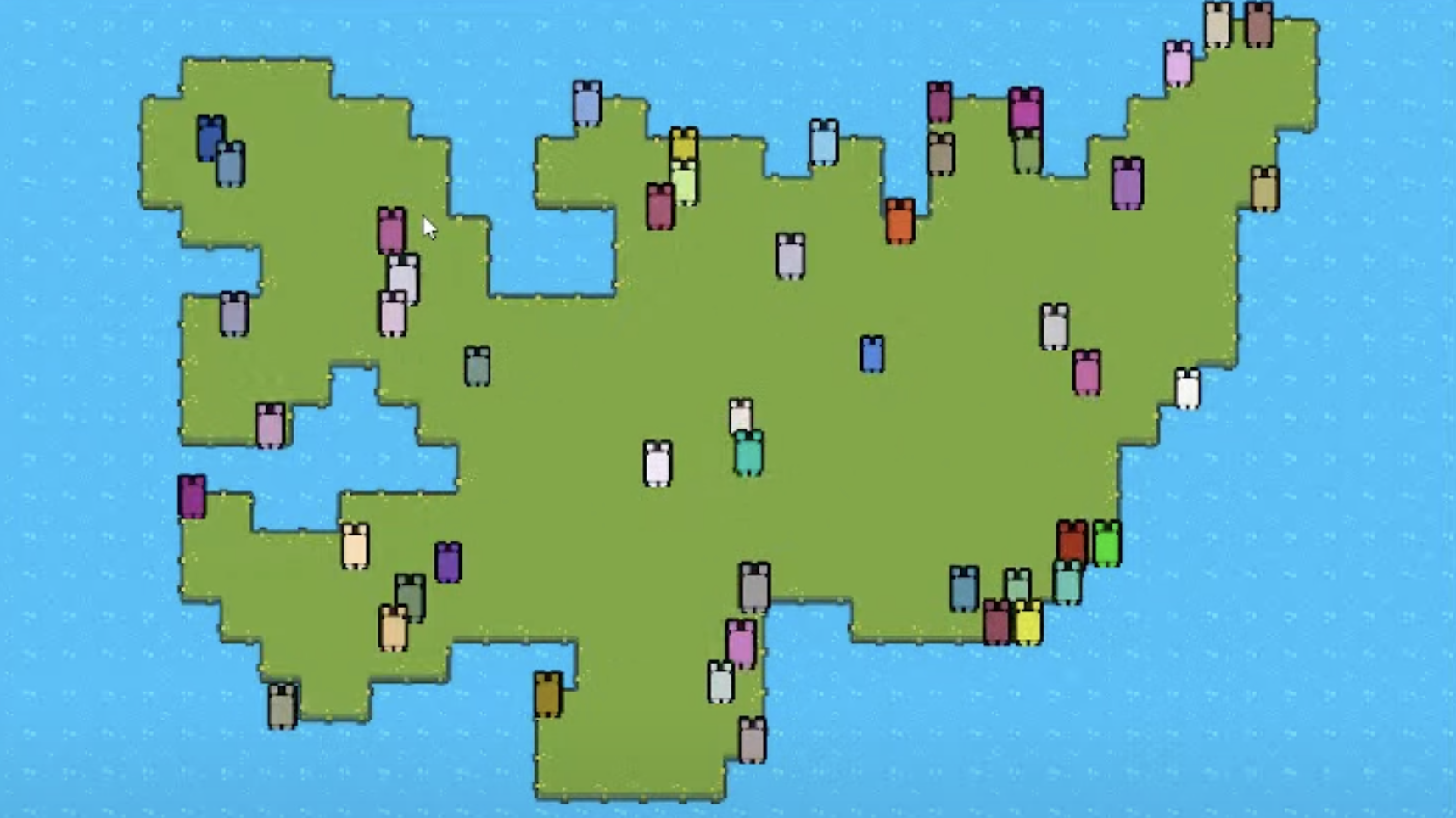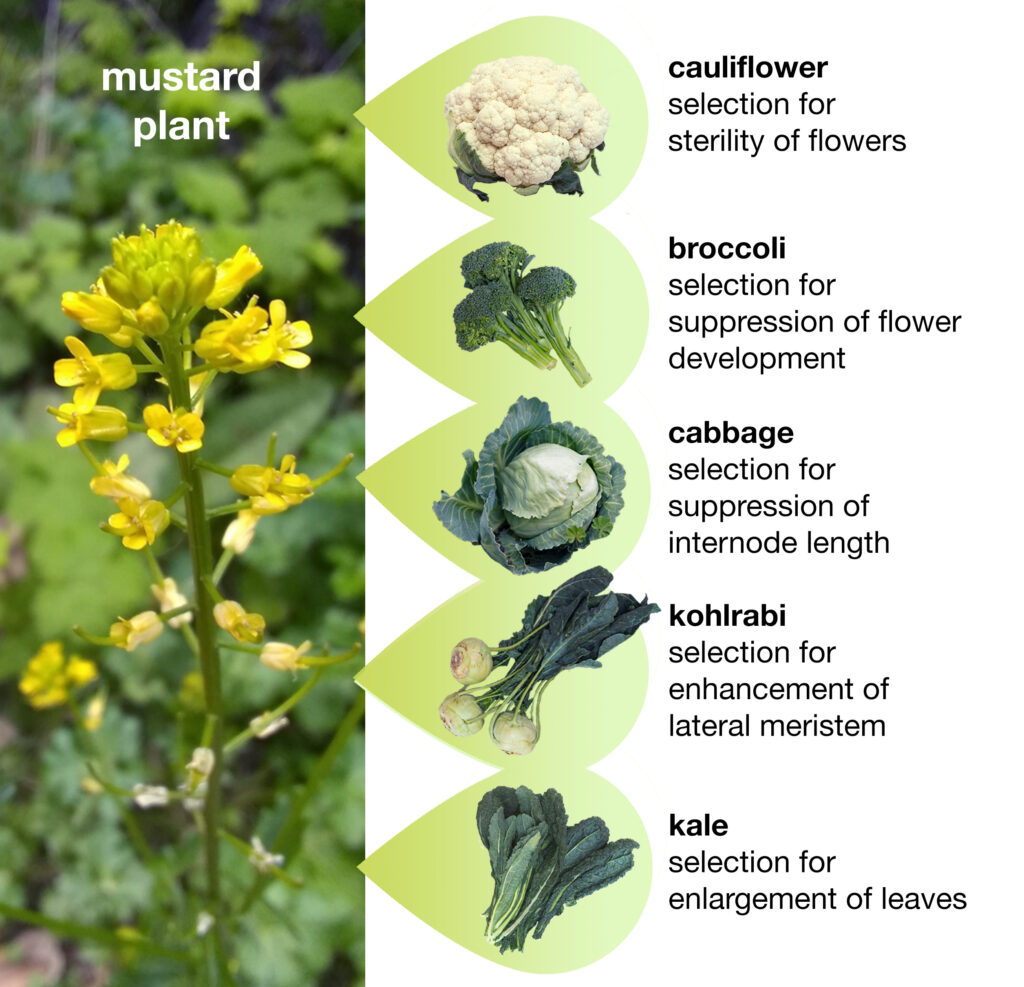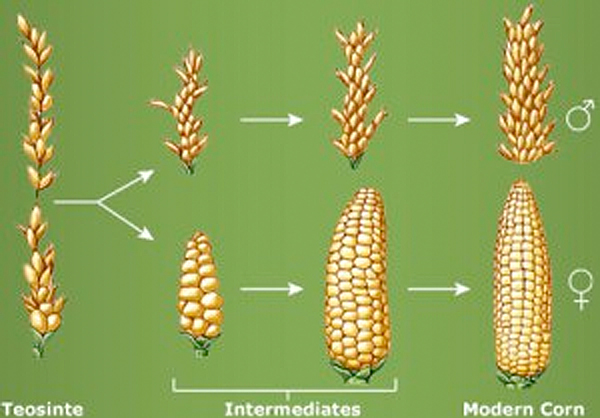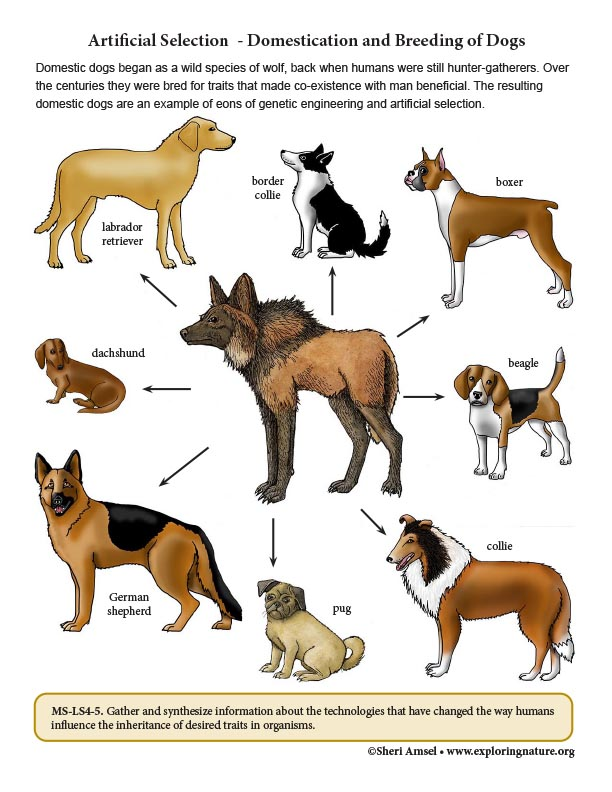Artificial Selection In Plants And Animals
June, 2025
For the last few years I've had a particular interest in evolution and natural selection. I've built a few projects that use neuroevolution algorithms to evolve small neural networks to complete tasks. One of my favourite evolution based project was a real time implementation of the NEAT algorithm (Neuroevolution of Augmenting Topologies). I rewrote the initial paper [1] from scratch in C# and live streamed most of the development (Playlist is here). The result was an island of little creatures running around searching food to reproduce and pass on their genes.

This particular implementation of the NEAT algorithm is meant to simulate natural selection and evolution. Natural selection occurs from random mutations in the offsprings of the creatures. Each offspring is mostly a duplicate of its parents, but with a few random attributes modified. The attributes are not modified to be beneficial, but they are adjusted in random ways.
Some of those mutations will be beneficial to the creature, and allow it to reproduce more successfully. Other mutations doom the creature and its lineage. Over a long enough period of time, beneficial mutations become a new standard in the species. Beneficial in this case simply describes something that helps the creature survive and reproduce in that specific environment. Many people have a misconception about the "survival of the fittest", it's not about whichever creature is "fit" in the sense of strength and agility, but which creature fits into the environment best.
For centuries, humans have used a form of evolution called artificial selection. In the case of artificial selection, being "fit" for the environment, fully depends on the trait that humans are selecting for. There are a few amazing examples of artificial selection, such as the number of dog breeds that are available to us today. We originally began by domesticating wolves, and from there we bred all the existing breeds into existence by selecting and breeding offsprings with the features we were looking for.
The pug is a particularly impressive case of artificial selection. By selectively breeding dogs with faces that were progressively more squished, we managed to create a breed of dog with breathing problems. There are now efforts to "undo" our damages and breed a new pug called the retro pug that actually has a snout. [3]
We have also used this technique to create more desireable foods. The cabbage family is an excellent example. The wild mustard plant was used and evolved into the following strands: cauliflower, broccoli, cabbage, kohlrabi, and kale. [2]

For plants, the process is ever so slightly different from animals. Instead of "breeding" plants together, it's a matter of saving seeds from the most desireable offspring. For example, while trying to create kale, a farmer might plant multiple mustard plants. From there, the farmer would take the seeds of the plant with the largest leaves and replant those. Of those offsprings, the process would be repeated, the ones with the largest leaves have their seeds saved and replanted and the other ones are discarded. Eventually, the plant is so different it's unrecognizable from its original form. [3]
The same concept has been applied to increase the nutrient value of plants. For example, corn was first domesticated in Mexico, where horticulturists crossed and selected corn to develop a strand that had more nutritious and filled kernels. [4]

We've done the same with a multitude of other plants. In fact, chances are that if you pick up a fruit or vegetable from your kitchen and search up its predecessors, the modern version you are holding in your hands was deliberately designed and selected for over the course of centuries.
Domestication of animals and plants has been crucial in human history. With domestication, we have bred and created breeds of animals and strands of plants to serve specific purposes their progenitors could not fulfil. Such as sweeter fruits and more nutritious vegetables. Chickens that lay more eggs or are literally walking meat. The modern plants and animals we see around us today, are partly designed by our hands.
[1]: Stanley, K. O., & Miikkulainen, R. (2002). Evolving Neural Networks through Augmenting Topologies. Evolutionary Computation, 10(2), 99–127. https://doi.org/10.1162/106365602320169811
[2]: Artificial selection. (n.d.). Retrieved June 30, 2025, from https://evolution.berkeley.edu/lines-of-evidence/artificial-selection/
[3]: Kuklinski, P. (2023, April 25). What Are Retro Pugs? DogTime. https://dogtime.com/dog-blog/trending/109890-what-are-retro-pugs
[4]: So where did all that corn come from again? (2013, November 20). Historyonthefox. https://historyonthefox.wordpress.com/2013/11/19/so-where-did-all-that-corn-come-from-again/
📖 3 completions
